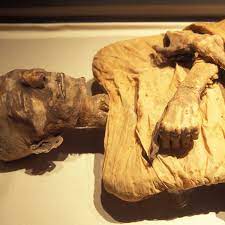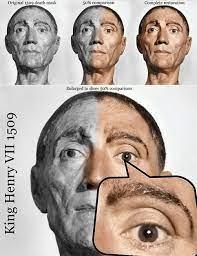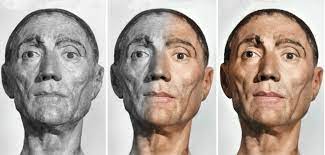Facial Reconstruction and DNA Phenotyping

Due to forensic DNA phenotyping and other advanced forensic techniques, it is now possible to see what three men living in the Egyptian city of Abusir el-Meleq looked like. The reconstructed faces of the three men were created using ancient DNA samples of the three men who are believed to have died between 1380 BC and 450 AD.
DNA phenotyping is a modern forensic technique that was used by an American company Parabon NanoLabs to create three-dimensional images of the Mummies’ faces. This advanced facial reconstruction technique has helped Parabon Nanolabs to solve 9 unsolved cases which were pending investigation due to the lack of discovery of new evidence.
The genome sequencing for the DNA samples from the mummies was done by scientists from the Max Planck Institute for the Science of Human History in Tubingen, Germany in 2017. This was the first instance of DNA samples being extracted from the Mummies. Until then, the scientists had believed that the DNA from Egyptian Mummies would not be able to survive for more than two millennia as a result of factors like extreme heat conditions, the humidity inside the tombs, and the chemicals used for the preservation. This was confirmed by a co-author of the study, Stephan Schiffels, in the Smithsonian Magazine.

Reconstruction of the faces
The reconstruction of the ancient Egyptian men’s faces involved a DNA phenotyping technique called Snapshot. This method can predict physical features like skin color, hair color, and eye color of the individuals whose DNA is taken for analysis based on their genetic markers. But this process has some constraints.
The Parabon NanoLabs team also used the technique of thorough physical examination of the remains of the Mummy to fill in other features of the men’s faces. The mummies’ skulls were used to create 3D networks of the men’s physical characteristics. This was followed by heat maps which were created to mark the differences between the men.
In the final step of the procedure, a forensic artist from Parabon NanoLabs combined the details of the 3D network with the Snapshot predictions regarding skin, hair, and eye color to rebuild the visage of the three faces.
Similarity and Resemblance
The three young faces of the men brought to life by the DNA phenotyping showed greater alikeness to the modern Mediterranean and Middle Eastern people than to modern Egyptians. This fact suggests that the three men who were mummified had light brown skin, dark hair, and brown eyes. According to the Smithsonian Magazine, the statement which was released by the study team and the images of the faces of the three men is cognate with the results of the previous genome analysis that the ancient Egyptians shared more of their ancestry with people of the Middle and Near East than modern Egyptians who had received and additional admixture from the sub-Saharan region in recent times.
According to the Smithsonian Magazine, a palaeo-geneticist at the University of Tubingen in Germany, who was a member of the earlier genome study, stated that the results of the reconstruction showed full genetic continuity across 1300 years. Therefore, though ancient Egypt was subjected to many invasions, the local population didn’t mix with the invaders as much as had been believed earlier.
The usefulness of ancient DNA
According to the director of bioinformatics of Parabon NanoLabs, working with ancient DNA is difficult because such DNA is in a state of high degradation and also is compromised by bacterial DNA. Therefore there is very little DNA available for sequencing. But because all human beings share the vast majority of DNA, researchers don’t need the entire genome of a person to visualize the physical features of someone who has long been dead.
They only need to examine some particular places in the genome which are known as Single Nucleotide Polymorphisms (SNPs) that vary between people. In the places where the ancient DNA doesn’t contribute enough SNPs to differentiate a particular feature, missing genetic information can be derived from other neighboring SNPs, according to bioinformatics researchers at Parabon NanoLabs.











